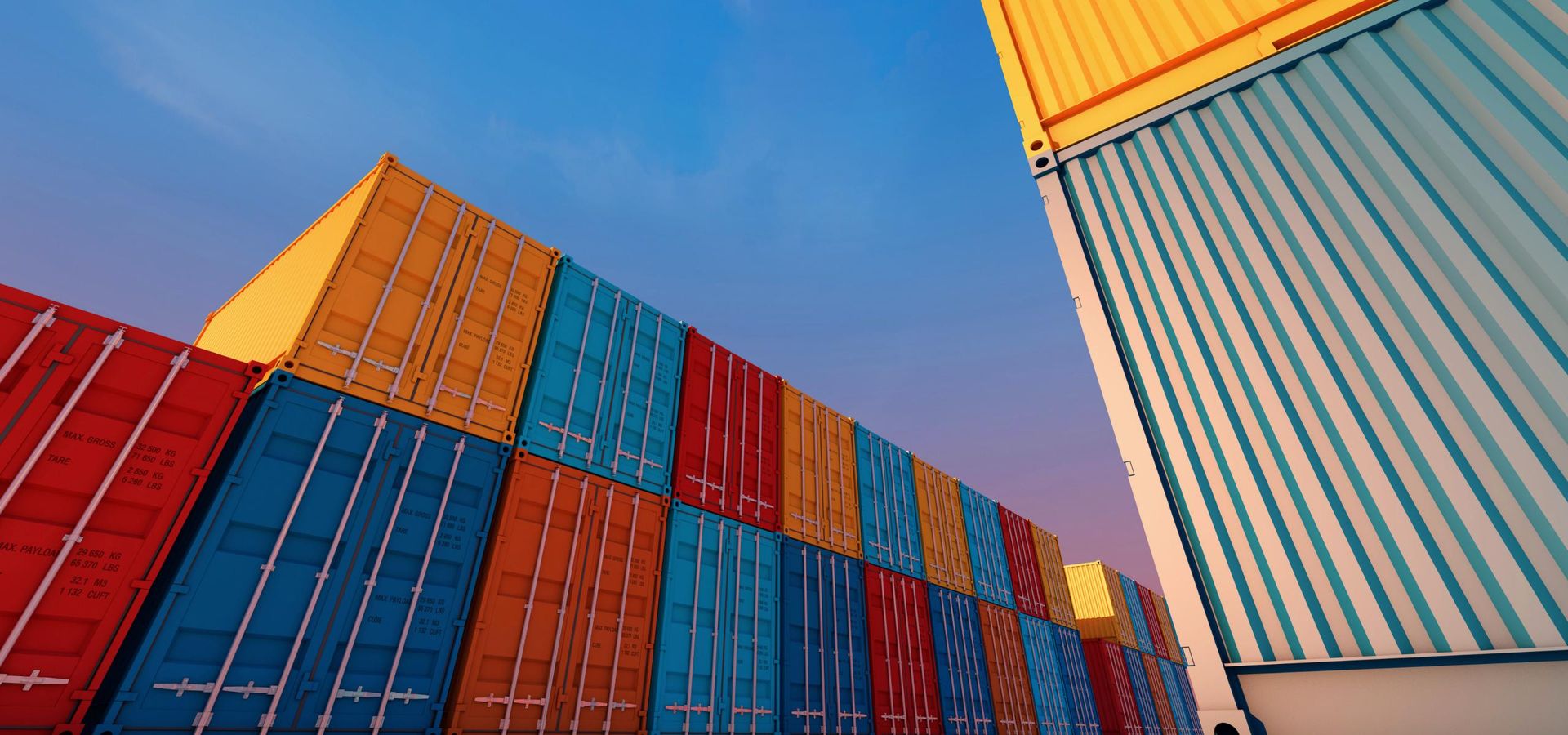
Robotic process automation for a global logistics company
Itransition delivered a robot, automating the processes of transportation data transfer and brief checks of client and supplier companies.
Context
Our customer is a logistics company offering worldwide shipping solutions for trading companies, wholesale suppliers, and retailers. Operating for more than two decades, they provide a range of services for different freight types engaging the befitting means of transport. The customer’s team is located in 24 countries, ensuring their clients can concentrate on strategic business matters while the customer takes care of the logistics aspects.
The customer has a 5,000+ client base, with companies from 20 industries. They also work with 15,000+ suppliers that help them meet the logistics needs of their clients. The customer processes around 800 orders daily, which implies performing a lot of routine tasks. They decided to investigate the options of automating data processing with the help of RPA to reduce manual work and ensure better data quality. Having considered the offers of several service providers, the customer chose Itransition to deliver the project based on our RPA expertise and the PoC that we delivered.
Solution
Itransition’s team performed the requirements analysis and documentation, RPA development, user acceptance testing, and employee training. We started with analyzing the company processes and together with the customer identified the ones to be automated together with their complexity. The processes that are easy to automate had higher priority. This way, the customer could see the results faster and get accustomed to RPA.
Then our team delivered a UiPath-based robot and set it up to perform a number of tasks at different times during the day. Using UiPath Orchestrator, our team set up a bot management dashboard. All the automated processes include:
- Adding CMR notes (international consignment notes) to the client’s order management system
- Data transfer (carriers, order numbers, and other information) from the customer’s system to the clients’ system
- Brief checks to keep the client and supplier databases up to date and identify clients’ potential to establish the available credit line
Automation for CMR notes
We started with automating the process of adding CMR notes from the customer’s order management system to their client’s system. One of the customer’s major clients is an international logistics company with several hundred thousand employees delivering more than a billion packages per year. They have an internal system to process courier orders, but it cannot be integrated with the customer’s system due to the absence of public API. So, the customer’s employees had to transfer CMR notes with the information on the goods’ sender, carrier(s), and consignee from their system to the client’s solution manually.
The CMR notes have a size limit of 1 MB and a naming convention according to which notes must contain “CMR” and a unique number in their names. We suggested introducing a naming convention using the ID number the customer uses in their system. The customer’s employees check the sizes and names of the files and then upload them to the network folder in the virtual environment. Once a day the robot is launched when we get a file with all orders from the customer’s system. The RPA process has the following steps:
To eliminate duplicates and prevent resending notes that were attached with errors, Itransition’s team suggested introducing a folder system for CMR notes:
- Folder 1 contains the CMR notes to be attached
- Folder 2 includes the ones that have already been attached
- Folder 3 comprises the CMR notes that could not be attached due to an error
The robot always checks folders 2 and 3 to see if there are the same files as in folder 1 to exclude duplicates and find the cases that require additional attention. For instance, if two CMR notes with the same names get into folders 1 and 2, the note from folder 1 will not be processed and considered already attached. The robot also detects successful operations and marks the ones that resulted in errors in a summary report for the customer’s employees.
Data transfer automation
Itransition automated the process of data transfer for two of the customer’s major clients, an international logistics company and a global consumer goods corporation. The process includes transferring the information from 20+ data fields (carrier, order number, etc.) from the customer’s system to the clients’ system as it is required by those companies.
Data transfer for an international logistics company
As the customer's clients must report to their end clients on the goods delivery, they have certain KPIs for transportation providers based on planned events: transportation done on time, delays and their reasons, and more. The customer has to add this data into the client’s transport management system within one business day. The robot checks the information about freight transportations to be entered within one day and transfers the corresponding data to the client’s system. If there is no information, it marks the transportation as an exception. When all the available data is entered, the robot compiles a report, including the total number of transportations, the ones that the robot has not found the information on, etc.
Data transfer for a global consumer goods corporation
For this client, the robot launches the data transfer process three times a day as well as a separate data download process once a day as it is required by the customer. The robot exports the information on all the transportations within a day.
The customer’s KPIs are lowered if their company does not enter the data into their client’s system during the day. That is why the data transfer process starts in the morning: if certain data is missing from the customer’s system, the robot notifies the responsible that there is a need to investigate those transportations, indicating which specific data is missing. In the middle of the day, the robot does an additional check to see if the missing data was entered into the customer’s system.
Sometimes the client’s vehicles are held off at customs and the cargo delivery is delayed. In such cases, the actual and planned arrivals do not coincide. Not to ping the customer’s employees on such occasions, we set up the robot to do checks within the course of three days and then stop as it is automatically assumed this case is under the attention of the customer’s employees.
Brief checks automation
The customer has dozens of thousands of clients and suppliers. For each of them, they need to collect information on registered numbers, annual revenues, bankruptcy status, affiliation with a group of companies, etc. The robot gets an email from the companies that it must check. The automated process of brief checks starts in the evening and continues until the morning. The next day the robot picks up where it left off.
The list of companies to be checked is downloaded daily from the customer’s internal systems. In addition, the customer’s employees can email the robot with their own lists to be checked with higher priority. The robot saves an Excel file with the results and sends it to the relevant employees.
In addition to that, the robot also performs a complex check of clients’ potential on several parameters to determine the available credit line. The robot goes to the external information systems the customer uses, parses data according to the required parameters, and compares it with critical values. For instance, the robot finds the number of employees and compares it with the borderline value. If the score is high, the robot stops the checking process. In case the number of employees is insufficient, the robot goes on to check the next value.
Results
Itransition’s RPA team automated three business processes. The developed robot took upon itself the routine tasks of transferring logistics data between the systems of the customer and their clients, as well as performing brief checks to keep the client and supplier databases up to date and evaluate clients’ potential. This way the customer’s employees can concentrate on more important business tasks.

Services
Agentic automation & RPA services
We deliver tailored process automation solutions for workflows of varying complexity, helping companies reduce manual effort across business operations.

Services
Logistics software development
Explore Itransition’s range of logistics software development services, along with top solutions, technologies, and implementation guidelines.

Case study
On-demand truck sharing solution
PayLoader automates the whole transportation process from an order placement to payment processing and client reviews management.

Case study
Shipping automation software migration to the cloud
Read our case study of migrating an international provider’s legacy shipping automation software to the cloud, helping them enter the SaaS market.

Case study
Robotic process automation HR PoC
Learn how Itransition developed an RPA bot that automates addition of new candidates to the HRM, significantly increasing process efficiency and reliability.